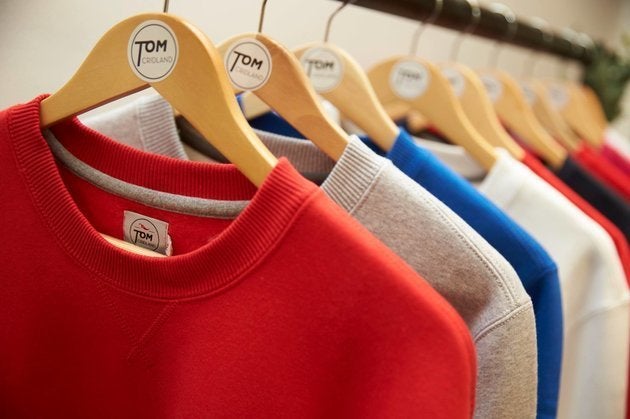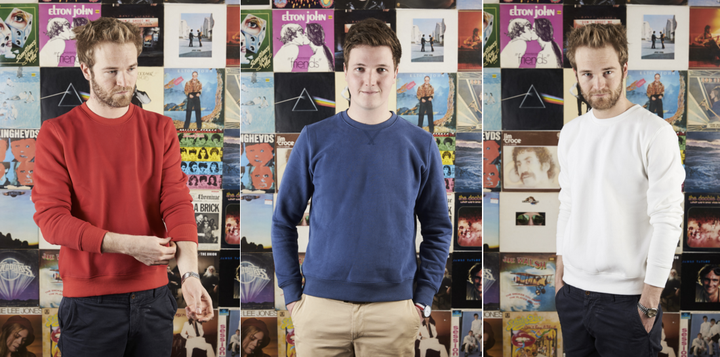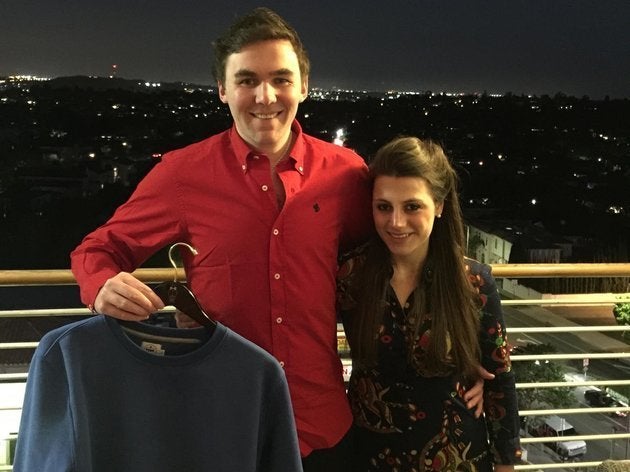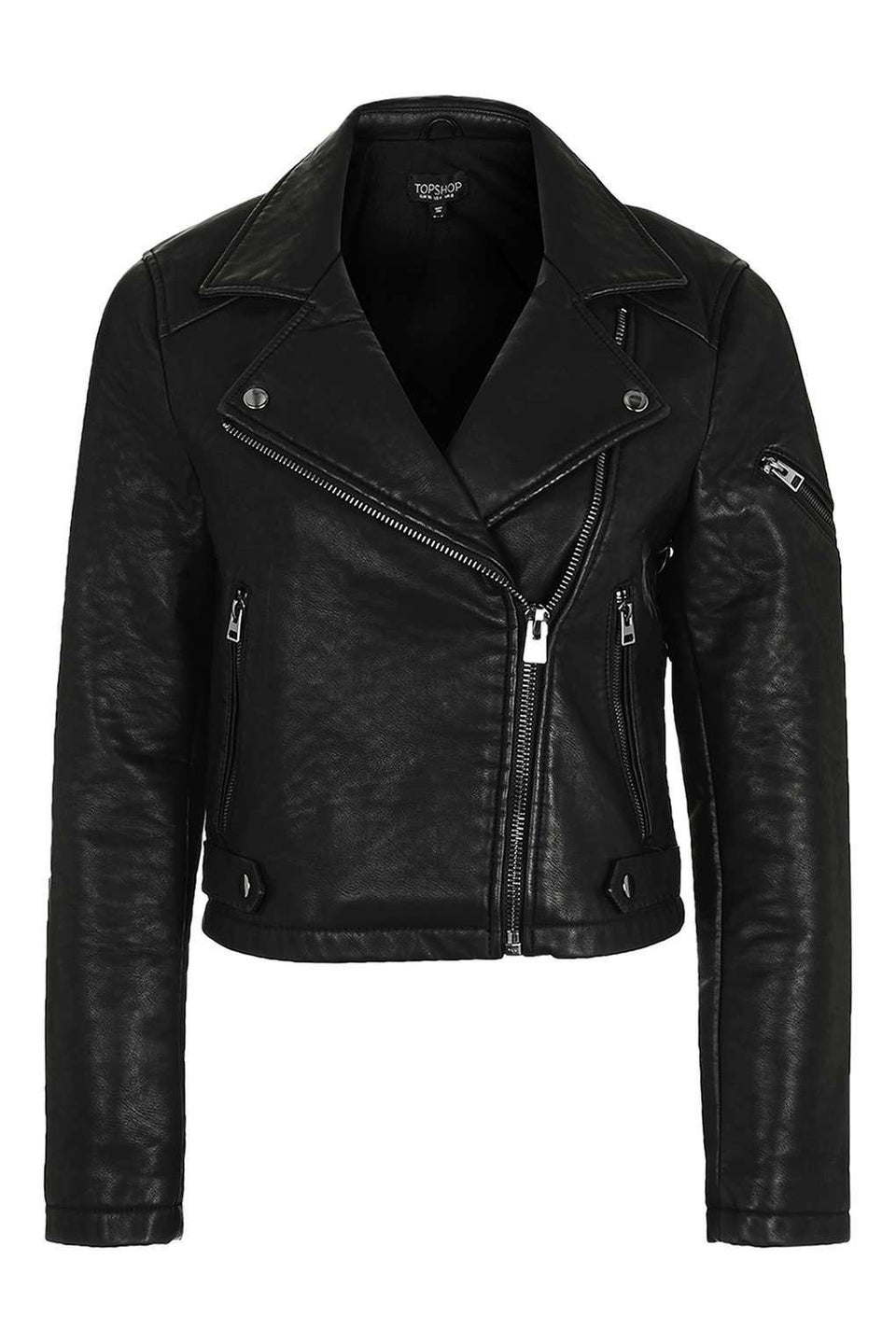
This article is part of HuffPost’s “Reclaim” campaign, an ongoing project spotlighting the world’s waste crisis and how we can begin to solve it.
Tom Cridland’s famous sweatshirts don’t look all that special. The basic crewnecks come in a range of solid colors and retail for close to $100. Their price even seems a little steep, until you realize that the products are guaranteed to last 30 years.
At least, that’s what their 25-year-old designer says. Cridland, whose eponymous clothing company specializes in high-quality garments, promises the brand will repair damaged items or replace them if they’re beyond fixing.
Cridland, a London native, began selling his 30-Year Sweatshirt last year and now also offers T-shirts and jackets with the same lengthy guarantee.
In an industry that’s become dominated by retailers selling cheaply made, affordable garments, Cridland’s plainly designed, ethically manufactured sweatshirt seems something of an anachronism, harkening back to a time when clothes were maintained and mended, not thrown away and replaced each season.
Is Cridland pioneering a business model that could one day slay H&M and Zara, the Goliaths of fast fashion? Or is the 30-year promise an empty, if well-meaning, one? Like many issues around building an environmentally sustainable business, the answer is complicated.

Cridland has garnered lots of attention because of the rich, famous actors and rock stars who wear his clothes. But the key to lasting success for his brand may be to make the average shopper care about the environmental impact of their clothes.
Tasha Lewis, an assistant professor of fashion design management at Cornell University, thinks Cridland’s idea is a noble and necessary one.
“I don’t know that I see it as a gimmick, I see it as sending a message,” Lewis said. “Celebrities are wearing it, and they’re sending a message to say, ‘I care what happens with clothing.’ He’s bringing attention to the issue in a very fashionable way.”
Indeed, the Tom Cridland company’s effort seems to have arrived at the right time.
The average American tosses out 70 pounds of clothing and other textiles per year, the equivalent in weight to more than 200 men’s T-shirts. The U.S. alone produced 15.1 million tons of textile waste in 2013, about 85 percent of which ended up in landfills, according to the U.S. Environmental Protection Agency. Once there, the decomposing garments add to the greenhouse gas emissions causing the planet to warm to catastrophic levels.

However, in an age when we’re taught to think of clothing as inexpensive, disposable items, a concept like Cridland’s might be hard to swallow.
Before tax and shipping, his sweatshirts are priced at roughly $85 each, the tees at more than $40 and the jacket, depending on the style, can run over $300. He also sells a line of men’s trousers that don’t come with a 30-year guarantee but do sell for more than what you’d expect to find in a popular, affordable retailer.
Considering that Cridland’s clothes are hand-stitched by a family-run business of seamstresses in Portugal, those prices are relatively affordable. And that’s partly because he sells his goods online only. (Space on a data server is almost always cheaper than paying a brick-and-mortar outlet’s rent, retail employee wages and electricity bills.)
Still, Tom Cridland-brand clothing is pricy compared to H&M, where a man can get a T-shirt for $5.99, a sweatshirt for $14.99 and an Oxford-weave blazer for just $49.99.
With the average American buying about 64 new items of clothing per year ― in part because the cheaper stuff simply doesn’t stand the test of time or more than a few rinse cycles ― spending a little more for something that lasts could save money over time since, in theory, you’d need to shop less frequently.
“It’s more expensive to produce, but it ends up saving money in the long run,” Cridland said of his products. “They look better, they save money, but the byproduct is they’re being sustainable because they’re not contributing to the needless cycle of waste.”

It helps that Cridland’s business says it will replace a 30-Year item if the owner destroys it. And there are other high-end garment makers with this kind of guarantee.
Patagonia, the California-based upscale outdoor gear and apparel maker, has long offered lifetime repairs on its clothes. The fashion brand Eileen Fisher also repairs damaged clothing or offers to reimburse its customers when they pay for their own tailors to sew a hole or replace a button. Cabot Hosiery Mills launched Darn Tough Vermont, the sock brand beloved by hikers, 11 years ago with a lifetime guarantee; it now sells nearly 5 million pairs per year.
“The concept of making something well that lasts isn’t a particularly new one,” Sass Brown, an interim dean at New York’s Fashion Institute of Technology who has written extensively on sustainable fashion, told HuffPost. “But it’s a good concept, and it’s one that is absolutely worthwhile.”
Tom Cridland has a long way to go to become profitable, though. The company sold about $849,000 worth of clothes in the last two years. That’s not a terrible start for a bootstrapped firm with only two full-time employees: Cridland and his longtime girlfriend and business partner, Deborah Marx. (Cridland says the pair plan to hire their first employee soon; the seamstresses work on a contract).
For comparison, H&M earned $562 million in profit during its third quarter this year alone.
As fashion sustainability creeps into the mainstream, Cridland could find a bigger market to tap. Privately-held Patagonia, for instance, has doubled its revenue since 2010 to $800 million, according to Bloomberg.
Like Patagonia, Cridland could continue to roll out more long-term insured items. By doing so, he might be able to entice people who bought his other 30-Year products. Over the years, those people could potentially acquire a bunch of Cridland’s garments.
“What some companies have done in the past is you help a customer build a wardrobe over time,” said Lewis, the assistant professor at Cornell. “Sort of like, ‘I know you bought this last year, but this goes with something I made this year’ ― so you kind of get into a timeless wardrobe-building relationship.”
That seems to be Cridland’s plan.
For now, the company only sells menswear, which could be a major boon. Men in the U.S. ― by far the world’s largest fashion market ― spend on average $10 more on clothes per month than women, according to a survey released earlier this year by Boutique @ Ogilvy, a fashion public relations firm. Menswear is expected to grow by 8.3 percent into a $110.3 billion market ― nearly twice the rate of womenswear.
An online-only seller like Cridland may be best positioned to tap that growth: In 2012, men outspent women in online shopping by 20 to 30 percent, according to Slate.
It’s also important to remember that, if the fashion business wants to shed its reputation for rivaling the oil industry as one of the world’s biggest polluters, it’ll need a patchwork of solutions. Efforts like Cridlands are a step in the right direction, albeit a tiny step.
“Will it solve fast fashion and the ethical issues with clothing and the textile industry? No, it won’t, but no one thing will do that anyway,” Brown said. “It requires a multitude of different perspectives and different answers. No single thing can solve the myriad problems we have in our industry.”

More stories like this:
- Here’s What Goodwill Actually Does With Your Donated Clothes
- Why You Should NEVER Throw Old Clothes In The Trash
- We Wore The Same Outfits To Work All Week. Here’s What Happened.
- These African Countries Don’t Want Your Used Clothing Anymore
- This Company Turns Plastic Bottle Trash From The Ocean Into Clothing
- Nearly All My Possessions Fit In A Suitcase, And I’ve Never Been Happier

